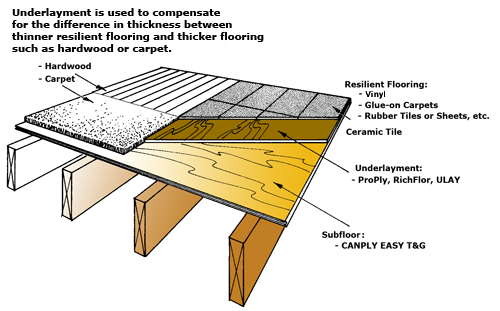The difference is that rather than being bolted down or installed directly onto the floor beneath they traditionally install underneath the edge of one of the materials locking into place.
Thick underlayment to deal with floor height differences.
Top is the finish flooring.
Laminate flooring is between 6 12mm thick.
If you find thicker than 12mm it s an inaccurate measurement possibly including attached padding.
Most likely your hardwood if 3 4 will be the determining factor and you will add various underlayments to bring up the other flooring material to the finished floor height you desire.
Reducer strips operate in a similar fashion to ramps in that they reduce the height from one flooring material to the other.
For instance 1 4 hardie on a bed of thinset will bring that to approximately 3 8 and tile on that could add another 3 8.
The floor can have an unlevel subfloor and still have a base for a nice laminate floor.
The differences in height between the two adjoining floors is typically not more than 1 2 inch at most.
Laminate flooring on an uneven subfloor can cause problems and needs to be addressed.
No it is not recommended to install a thick or double layer of underlayment with laminate flooring.
It s a bit confusing but a flat floor can still be slightly out of level and still create a good foundation for a long lasting floor installation.
You can deal with it easy enough using a belt sander and a piece of matching hardwood.
Very bottom is the subfloor okay well the floor joists are at the very very bottom.
Underlayment is manufactured and meant to be used as only a single layer to allow your floor to be balanced and float properly.
Between the subfloor and finish floor is the underlayment.
How thick is tile flooring backer board when installed.
How thick should the underlayment be.
If you want the highest quality hardwood feel you ll want 10 or 12mm.










